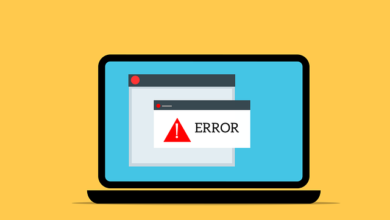How to Optimize Your B2B Content Strategy with a Content Audit
In today’s fast-paced digital world, a robust b2b content audit is essential for businesses to engage their target audience effectively. As companies grow and produce more content, maintaining consistency, relevance, and quality can become a daunting task. This is where a content audit comes into play, helping organizations assess the performance of their existing content and identify areas for improvement.
What is a Content Audit?
A content audit is a comprehensive analysis of all the content assets a company has created, including blog posts, whitepapers, videos, social media updates, and more. It involves evaluating the relevance, quality, and performance of each piece of content to determine what’s working, what’s not, and what needs to be updated or removed.
Why is a Content Audit Important for B2B Companies?
For B2B companies, a content audit is essential for several reasons:
- Aligns Content with Business Goals: By analyzing your content, you can ensure that it aligns with your overall business objectives, target audience, and brand messaging.
- Improves User Experience: A content audit helps identify gaps, duplications, and irrelevant content, allowing you to streamline your content and provide a better user experience for your audience.
- Enhances SEO Performance: Outdated or low-quality content can negatively impact your search engine rankings. A content audit enables you to identify and optimize underperforming content, improving your overall SEO strategy.
- Saves Time and Resources: By identifying which content assets are performing well and which ones need improvement, you can allocate your time and resources more effectively.
Steps to Conduct a Comprehensive Content Audit
Performing a content audit can be a daunting task, but breaking it down into smaller steps can make the process more manageable. Here’s a step-by-step guide to conducting a comprehensive content audit:
- Inventory Your Content Assets
The first step is to gather all your content assets in one place. This includes website pages, blog posts, whitepapers, case studies, videos, social media updates, and any other content you’ve created. You can use tools like Screaming Frog or Google Analytics to crawl your website and generate a comprehensive list of content assets.
- Define Your Evaluation Criteria
Once you have a complete list of your content assets, you need to define the criteria you’ll use to evaluate each piece of content. These criteria could include:
- Relevance to your target audience
- Alignment with your business goals and messaging
- Quality of the content (grammar, structure, readability)
- Performance metrics (page views, engagement, conversions)
- Freshness and timeliness of the information
- Evaluate and Categorize Your Content
With your evaluation criteria in place, go through each content asset and categorize it based on its performance and relevance. You can use a simple rating system (e.g., 1-5 stars) or create more detailed categories like:
- Keep as-is
- Update or refresh
- Consolidate or merge with other content
- Remove or archive
- Analyze the Data
Once you’ve evaluated and categorized all your content assets, analyze the data to identify patterns, trends, and areas for improvement. Look for content that consistently performs well or poorly, and try to understand the reasons behind their success or failure.
- Develop an Action Plan
Based on your analysis, develop a comprehensive action plan to optimize your content strategy. This plan should include:
- Content to be updated, consolidated, or removed
- New content ideas to fill gaps or address emerging trends
- A content creation and distribution calendar
- Strategies for promoting and repurposing high-performing content
- Metrics and KPIs to measure the success of your updated content strategy
- Implement and Monitor
Finally, implement your action plan and monitor its progress. Regularly review your content performance, gather feedback from your audience, and make adjustments as needed. A content audit should be an ongoing process, as your business goals, target audience, and industry trends continue to evolve.
Pros and Cons of a Content Audit
Pros:
- Improved Content Quality and Relevance
- Better User Experience
- Enhanced SEO Performance
- Aligned with Business Goals
- Optimized Resource Allocation
Cons:
- Time-Consuming Process
- Potential Loss of Historical Content
- Requires Dedicated Resources
- Challenges in Evaluating Subjective Criteria
- Potential Disruption to Existing Content Strategy
“A content audit is a powerful tool that enables us to take a step back and critically evaluate our content strategy. It helps us identify what’s working, what’s not, and where we need to focus our efforts to deliver the best possible value to our audience.” – Business Owner
Key Benefits of a Successful Content Audit for Your Business
- Improved Brand Awareness and Authority: By consistently delivering high-quality, relevant content, you’ll establish your brand as a trusted authority in your industry, attracting more potential customers and building long-lasting relationships.
- Better Lead Generation and Conversions: Optimized content that resonates with your target audience will generate more qualified leads and increase the likelihood of conversions, driving business growth.
- Increased Website Traffic and Engagement: Well-crafted, SEO-optimized content will improve your search engine rankings, driving more organic traffic to your website and increasing engagement with your audience.
- Efficient Resource Allocation: By identifying which content assets are performing well and which ones need improvement, you can allocate your time, budget, and resources more effectively, maximizing the ROI of your content marketing efforts.
- Competitive Advantage: A strategic content audit and optimization plan will help you stay ahead of your competitors by anticipating and addressing emerging trends, audience needs, and industry shifts.
If you’re looking for the best content audit services or a best content audit service provider, consider working with Brand Donut. They offer professional SEO services and local SEO solutions to help increase your website’s visibility and drive more qualified traffic to your business across the United States.
Well-written content is vital for building trust, establishing authority, and providing value to your audience. A well-executed content audit can help you achieve these goals and drive better results for your B2B business. If you’re in need of best content audit services or seeking a best content audit service provider, consider partnering with a reputable agency like Brand Donut to optimize your content strategy and take your business to new heights.
FAQs
Q1: How often should I conduct a content audit?
A content audit should be performed at least once a year, but you may need to do it more frequently depending on the size of your content library and the rate at which you produce new content. Regularly reviewing and updating your content is crucial to maintain its relevance and effectiveness.
Q2: Can a content audit help with SEO?
Yes, a content audit can help identify underperforming content, allowing you to optimize it for better search engine visibility. It also helps you identify content gaps and opportunities to create new, SEO-friendly content that targets relevant keywords and topics.
Q3: What tools can I use for a content audit?
There are various tools available to assist with a content audit, including Google Analytics, Screaming Frog, SEMrush, Ahrefs, and others. These tools can help you gather data on content performance, identify broken links, and analyze keyword rankings.
Q4: How does a content audit compare to other marketing strategies?
A content audit is a crucial component of an effective content marketing strategy. While other marketing strategies like paid advertising or social media campaigns can drive immediate results, a well-executed content strategy supported by a thorough content audit can deliver long-term, sustainable growth and establish your brand as a thought leader in your industry.
Q5: Can a content audit help with lead generation and conversions?
Yes, by optimizing your content to better align with your target audience’s interests and needs, a content audit can help improve lead generation and conversion rates. High-quality, relevant content builds trust and credibility, making it more likely for visitors to engage with your business and convert into customers.



